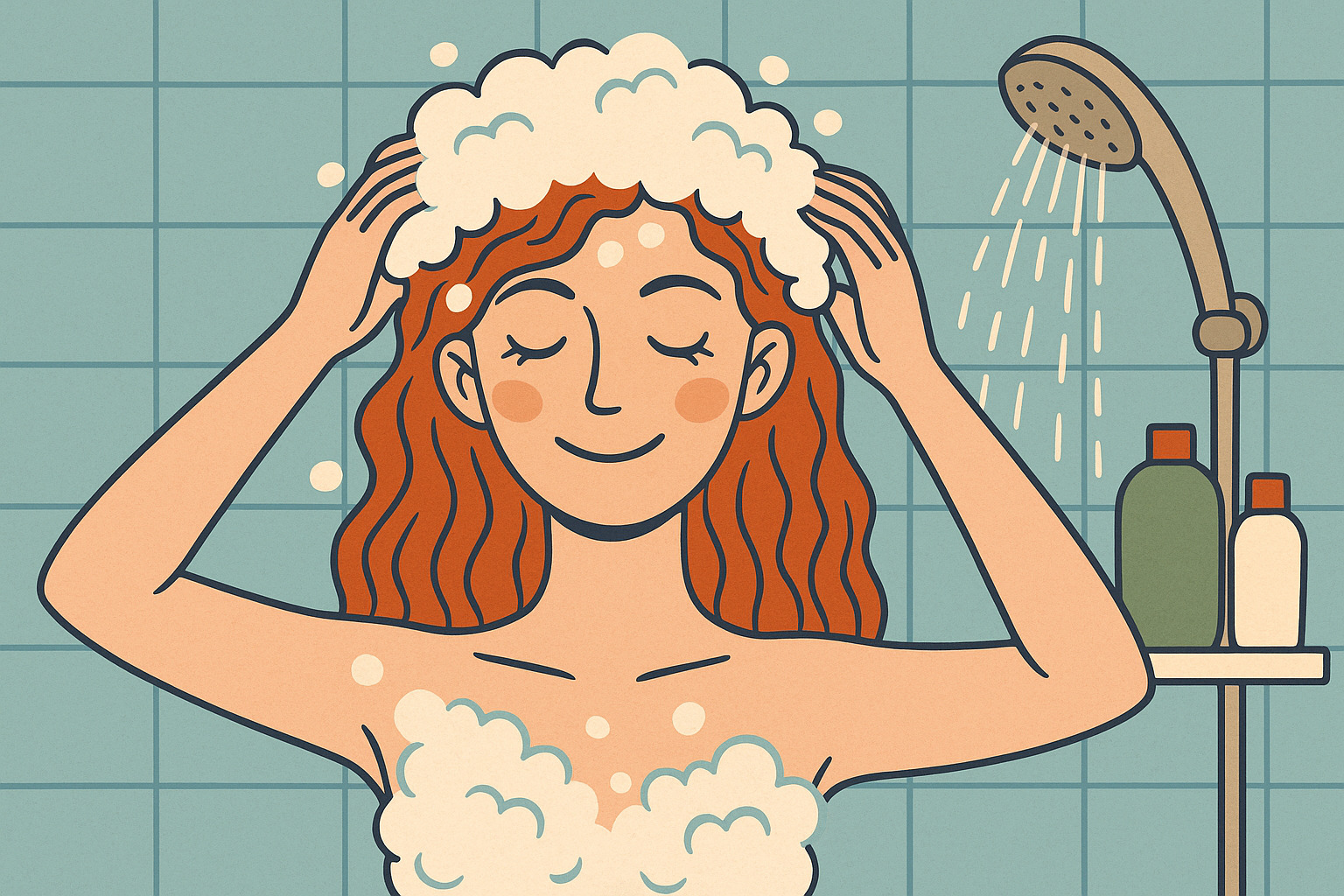How often should you wash your hair? What’s the right way to do it? Most of us have asked these questions while standing in the shower, trying to figure out why our hair feels dull, greasy, or overly dry. The truth is, washing your hair is more than just shampoo and rinse. It’s a process that, when done correctly, can lead to stronger, healthier strands with more shine and volume. Here’s how to do it better.
1. Brush Before You Shower
Brushing your hair before it gets wet is one of the simplest ways to prevent breakage. Wet hair is more fragile and prone to snapping. Brushing dry hair first not only gets rid of tangles but also helps distribute natural oils from the scalp down to the ends. This preps the hair for a more even wash and prevents knots that become worse under running water.
2. Use Lukewarm, Not Hot Water
Hot water can feel soothing, but it’s harsh on your hair. It strips away natural oils, leaving both the scalp and strands dehydrated. Lukewarm water is ideal—it opens the cuticle just enough to cleanse effectively without over-drying. At the end of your routine, a cool rinse helps seal the cuticle back down, adding natural shine and smoothness to your strands.
3. Start With a Scalp Cleanse
Shampoo is meant for your scalp first. That’s where oil, dirt, and product buildup tend to settle. Work a small amount of shampoo into your roots using your fingertips in circular motions. Don’t use your nails—scratching can irritate or damage the skin. This massage boosts blood circulation, which can promote healthier hair growth, and makes sure the roots are actually clean.
4. Don’t Use Too Much Product
There’s a myth that more shampoo means cleaner hair. In reality, using too much can lead to product overload and residue. For most hair lengths, a nickel- to quarter-sized amount is enough. Emulsify it in your hands first, then apply. If you feel like your hair isn’t clean after the first wash, do a second round with the same small amount.
5. Double Cleanse If Necessary
If you regularly use dry shampoo, hair sprays, leave-in products, or oils, a single shampoo session might not cut it. The first cleanse breaks down product and excess sebum. The second wash actually removes it. You’ll notice a better lather the second time, and your scalp will feel lighter and cleaner afterward.
6. Condition the Right Way
Conditioner is not for the scalp. Applying it at the roots can clog follicles and cause the hair to fall flat faster. Focus instead on the mid-length to ends—where the hair is older, drier, and more prone to damage. Let it sit for at least two minutes so it can do its job, then rinse thoroughly. Leaving traces behind can lead to dullness and buildup.
7. Squeeze Out Water Before Conditioning
After rinsing out your shampoo, gently squeeze out the excess water from your hair. Conditioner sticks better to hair that’s damp rather than soaking wet. If your hair is drenched, the conditioner can slide right off, diluting its effect. A quick squeeze with your hands or a gentle towel blot helps maximize product absorption.
8. Use a Microfiber Towel or Cotton T-Shirt
Traditional bath towels are rough on wet hair. The loops in terry cloth can pull and stretch strands, creating frizz and even breakage. Instead, wrap your hair in a microfiber towel or a soft cotton T-shirt. They absorb water without causing friction, reduce drying time, and help maintain the hair’s natural texture.
9. Don’t Wash Daily Unless You Have To
Your scalp needs its natural oils to stay balanced. Washing too often can strip those oils, causing dryness or, in some cases, increased oil production to compensate. Unless you have an extremely oily scalp or sweat heavily every day, most people do best washing 2 to 3 times a week. When you do wash daily, opt for a gentle, sulfate-free formula that cleans without overdoing it.
10. Match Products to Your Hair Type
Using the wrong products can sabotage your hair routine. Fine hair benefits from lightweight volumizing shampoos and conditioners that won’t weigh it down. Thick or curly hair thrives with richer, moisture-replenishing formulas. If your hair is color-treated, use sulfate-free and color-safe products to prevent fading. Know your hair type and choose accordingly—it makes a noticeable difference in how your hair feels and behaves.
Bonus Tip: Clean Your Brushes and Shower Head Regularly
Your haircare tools matter just as much as your products. Dirty brushes collect oil, lint, and residue, which gets transferred back onto clean hair. Make a habit of cleaning them weekly. Your shower head can also build up mineral deposits over time, which may alter water quality and affect how your hair reacts after washing. Keep both clean to support a healthier routine.
Washing your hair is a ritual you repeat several times a week. Done right, it supports scalp health, strengthens strands, and gives you hair that feels and looks better day after day. It’s not about doing more—it’s about doing it right.
